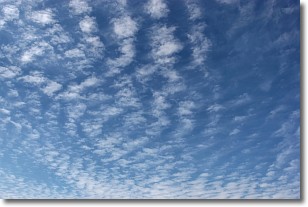Weather Alert in Michigan
Air Quality Alert issued May 29 at 12:09PM EDT by NWS Marquette MI
AREAS AFFECTED: Keweenaw; Ontonagon; Houghton; Baraga; Marquette; Gogebic; Iron; Dickinson; Menominee; Southern Houghton
DESCRIPTION: The Michigan Department of Environmental Quality has issued an Air Quality Advisory for elevated levels of fine particulates (PM2.5) in the western half of the Upper Peninsula of Michigan. Pollutants within those areas are expected to be in the Unhealthy for Sensitive Groups range. The Air Quality Advisory includes the following counties: Baraga, Dickinson, Gogebic, Houghton, Iron, Keweenaw, Marquette, Menominee, and Ontonagon. A cold front moving down from Ontario early Friday morning will bring wildfire smoke plumes from fires in the provinces of Manitoba and Saskatchewan into the region. As a result, we anticipate PM2.5 levels rising into the Unhealthy for Sensitive Groups (USG) range across the western portion of the Upper Peninsula. There is a possibility that hourly levels could reach the Unhealthy (Red AQI) range for a short period of time. It is recommended that, when possible, you avoid strenuous outdoor activities, especially those with heart disease and respiratory diseases such as asthma. Monitor for symptoms such as wheezing, coughing, chest tightness, dizziness, or burning in nose, throat, and eyes. Reduce or eliminate activities that contribute to air pollution, such as outdoor burning, and use of residential wood burning devices. Tips for households: Keep windows closed overnight to prevent smoke from getting indoors and, if possible, run central air conditioning with MERV-13 or higher rated filters. For up-to-date air quality data for Michigan visit the MiAir site: https://air-egle.hub.arcgis.com/ For further information, please see EPA's Air Now site for up-to- date air quality data at https://www.airnow.gov For further health information, please see MDHHS' Wildfire Smoke and Your Health site at https://www.michigan.gov/mdhhs/safety-injury- prev/environmental-health/your-health-and-wildfire-smoke. Air Quality Advisory Michigan Department of Environment, Great Lakes, and Energy May 29, 2025
INSTRUCTION: N/A
Want more detail? Get the Complete 7 Day and Night Detailed Forecast!
Current U.S. National Radar--Current
The Current National Weather Radar is shown below with a UTC Time (subtract 5 hours from UTC to get Eastern Time).

National Weather Forecast--Current
The Current National Weather Forecast and National Weather Map are shown below.

National Weather Forecast for Tomorrow
Tomorrow National Weather Forecast and Tomorrow National Weather Map are show below.

North America Water Vapor (Moisture)
This map shows recent moisture content over North America. Bright and colored areas show high moisture (ie, clouds); brown indicates very little moisture present; black indicates no moisture.

Weather Topic: What are Cirrocumulus Clouds?
Home - Education - Cloud Types - Cirrocumulus Clouds
 Next Topic: Cirrostratus Clouds
Next Topic: Cirrostratus Clouds
Cirrocumulus clouds form at high altitudes (usually around 5 km)
and have distinguishing characteristics displayed in a fine layer of
small cloud patches. These small cloud patches are sometimes referred to as
"cloudlets" in relation to the whole cloud formation.
Cirrocumulus clouds are formed from ice crystals and water droplets. Often, the
water droplets in the cloud freeze into ice crystals and the cloud becomes a
cirrostratus cloud. Because of this common occurrence, cirrocumulus cloud
formations generally pass rapidly.
Next Topic: Cirrostratus Clouds
Weather Topic: What are Cirrus Clouds?
Home - Education - Cloud Types - Cirrus Clouds
 Next Topic: Condensation
Next Topic: Condensation
Cirrus clouds are high-level clouds that occur above 20,000 feet
and are composed mainly of ice crystals.
They are thin and wispy in appearance.
What do they indicate?
They are often the first sign of an approaching storm.
Next Topic: Condensation
Current conditions powered by WeatherAPI.com




